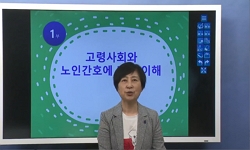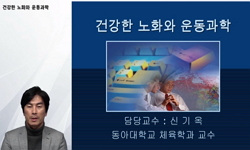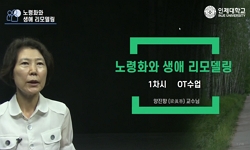Soft tissue ptosis occurs with age, leading to loss of facial volume. The facial retaining ligamentous system is an intricate network of fibrous tissues connecting the whole face, restraining soft tissues from gravitational forces, and opposing facial...
http://chineseinput.net/에서 pinyin(병음)방식으로 중국어를 변환할 수 있습니다.
변환된 중국어를 복사하여 사용하시면 됩니다.
- 中文 을 입력하시려면 zhongwen을 입력하시고 space를누르시면됩니다.
- 北京 을 입력하시려면 beijing을 입력하시고 space를 누르시면 됩니다.

Outcome of mid- and lower face lifting using bidirectional cone sutures at 6 months and 1 year
한글로보기https://www.riss.kr/link?id=A108152220
-
저자
Phoebe Kar Wai Lam (Association of Doctors in Aesthetic Medicine, Hong Kong) ; James Yui Lam (Association of Doctors in Aesthetic Medicine, Hong Kong) ; Alvin Kar Wai Lee (Association of Doctors in Aesthetic Medicine, Hong Kong) ; Clyde Wang Lung Luk (Association of Doctors in Aesthetic Medicine, Hong Kong) ; Paul Man Kei Tam (Association of Doctors in Aesthetic Medicine, Hong Kong) ; Cheuk Hung Lee (Association of Doctors in Aesthetic Medicine, Hong Kong)
- 발행기관
- 학술지명
- 권호사항
-
발행연도
2021
-
작성언어
English
-
주제어
aging ; fascia ; ligaments ; nasolabial fold ; rhytidoplasty
-
등재정보
KCI등재
-
자료형태
학술저널
-
수록면
36-39(4쪽)
-
KCI 피인용횟수
0
- DOI식별코드
- 제공처
-
0
상세조회 -
0
다운로드
부가정보
다국어 초록 (Multilingual Abstract)
Soft tissue ptosis occurs with age, leading to loss of facial volume. The facial retaining ligamentous system is an intricate network of fibrous tissues connecting the whole face, restraining soft tissues from gravitational forces, and opposing facial movements. With proper positioning and anchorage within the ligamentous grid and superficial fat repositioning, lifting the mid-face and adjacent areas (e.g., jowl) is likely to occur. We aimed to determine whether inserting 3 pairs of bidirectional cone sutures can effectively improve the nasolabial fold (mid-face) and jowl (lower face) in Asian patients with mild to moderate mid-face laxity at 6 months and 12 months. Ten healthy volunteers with mild to moderate facial laxity received 3 pairs of bidirectional cone threads, inserted in a straight parallel technique. Based on validated evaluation parameters: facial laxity rating scale (FLRS) and the wrinkle severity rating scale, a total of 7 independent reviewers, among which 3 assessed the change in mid-face laxity (nasolabial fold), and the other 4 reviewers evaluated the change in jowl or lower face contour based on FLRS at 6 months and 12 months. All reviewers were experienced esthetic doctors. According to the reviewers’ evaluation based on the validated parameters, there was a linear improvement in the mid-face laxity/nasolabial fold and lower face laxity/jawline contour self-reporting patients’ satisfaction at 6 months and 12 months compared to baseline in all 10 patients. There was continuous improvement in mid-face laxity and lower face laxity from baseline, 6 months, and 12 months after treatment. The evaluation results among the reviewers were similar, apart from reviewer 7. All patients gave their best rating at 12 months, and their satisfaction almost doubled compared to that before treatment.
참고문헌 (Reference)
1 Furnas DW, "The retaining ligaments of the cheek" 83 : 11-16, 1989
2 Lorenc ZP, "Straight-line vector planning for optimal results with silhouette instalift in minimally invasive tissue repositioning for facial rejuvenation" 17 : 786-793, 2018
3 Russo PR, "Histological findings after insertion of PLLA sutures with bi-directional cones in humans : two years follow-up" 14 : 121-125, 2018
1 Furnas DW, "The retaining ligaments of the cheek" 83 : 11-16, 1989
2 Lorenc ZP, "Straight-line vector planning for optimal results with silhouette instalift in minimally invasive tissue repositioning for facial rejuvenation" 17 : 786-793, 2018
3 Russo PR, "Histological findings after insertion of PLLA sutures with bi-directional cones in humans : two years follow-up" 14 : 121-125, 2018
동일학술지(권/호) 다른 논문
-
- 대한미용의학회
- 김선형
- 2021
- KCI등재
-
- 대한미용의학회
- 조성일
- 2021
- KCI등재
-
Functional and esthetic reconstruction of microtia and congenital aural atresia: a case report
- 대한미용의학회
- 조성일
- 2021
- KCI등재
-
A case of arteriovenous malformation of the nasal dorsum
- 대한미용의학회
- Hyejeen Kim
- 2021
- KCI등재




 스콜라
스콜라







